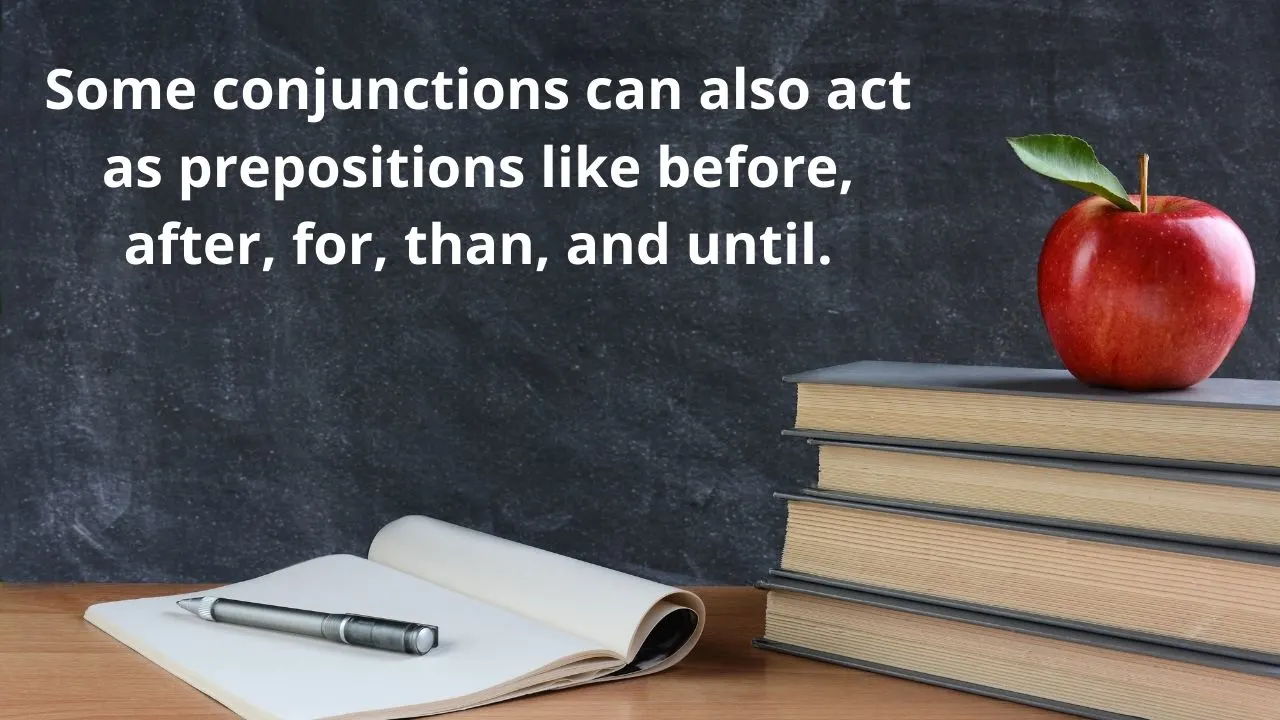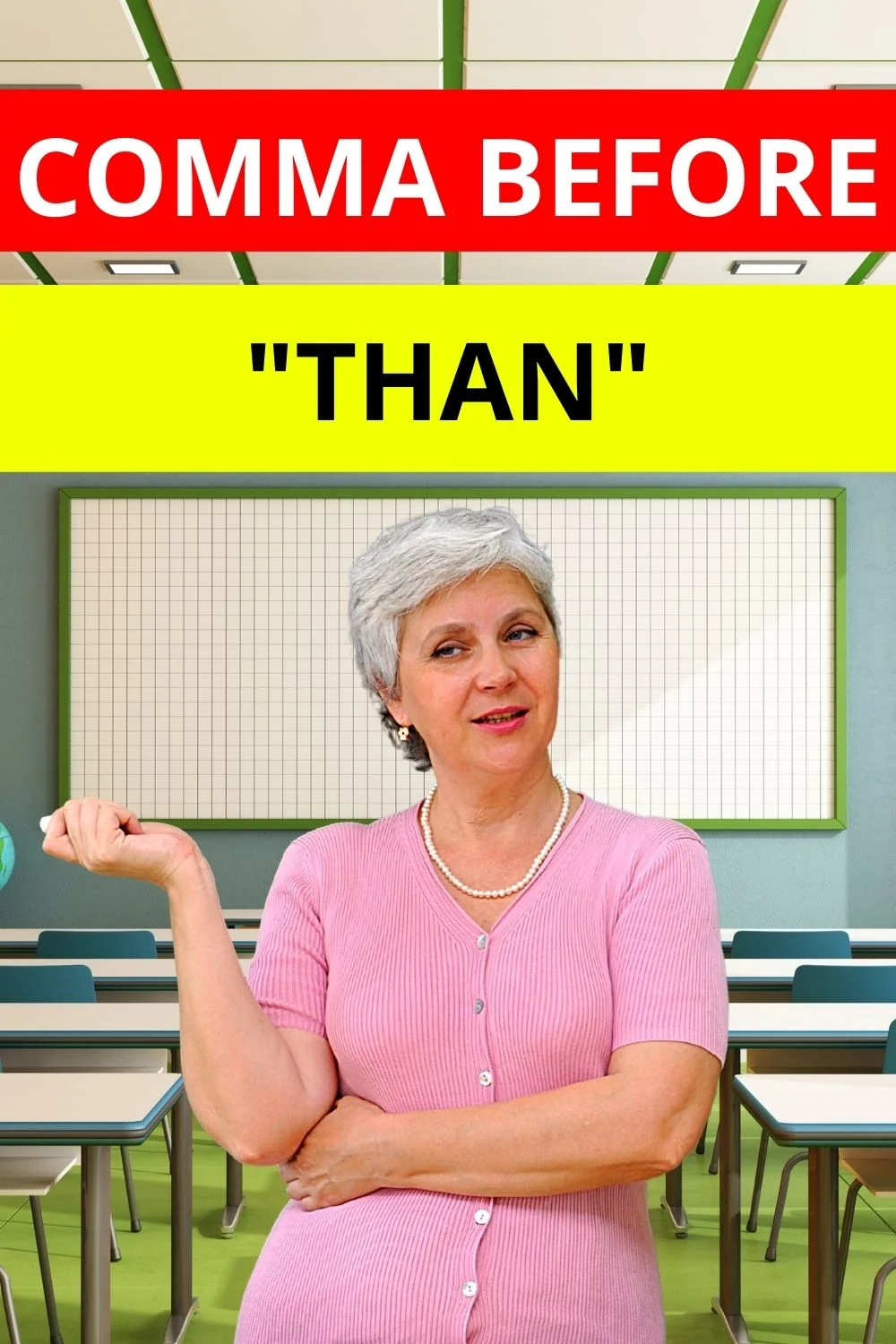What do you think is the second most appalling question a writer ever gets apart from “Any plans on having a real job?”
Actually, it is “Can you briefly tell me how the punctuation system works?”
The punctuation system per se is far too complex to be explained in one sitting, let alone “briefly.”
So, to shed light on this issue, we have tried to cover such punctuation subtleties in a digestible manner as in this post.
Please read on to understand more about when a comma is necessary before “than” when constructing sentences.
When do we need a comma before “than”?
A comma should not be placed before “than” unless it appears in series. And, a comma may conveniently precede “than” when it introduces parenthetical information at the end of a sentence, which may only happen when facilitating readability or trying to achieve an emphatic effect. However, a comma must not be used before “than” when it ordinarily and non-parenthetically functions as a preposition or a conjunction in a sentence.
Understanding the necessity of a comma before “than”
The word “than” can either be used as a conjunction or a preposition that denotes comparison and contrast of items or ideas.
It functions as a conjunction when it precedes a subordinate clause, while it functions as a preposition when a noun or noun phrase follows afterward.
In particular, “than” is a word classified under subordinating conjunctions, which is used to link a subordinate clause to the main clause.
Good writers, English teachers, and straight-A students most likely know that a comma should not be used before subordinating conjunctions.
This is because the comma defeats the purpose of the connective device per se, as well as the necessity of the information contained in the subordinate clause.
As a preposition, “than” is also used to introduce the other entity being compared to in a statement, which needs to be a noun or a noun phrase.
“Than” is a crucial element in understanding our lessons on comparative adjectives and adverbs, as well as in constructing grammatically-correct sentences.
Putting a comma before prepositions also makes sentences grammatically unsound, unless, of course, when and if there is a necessity to do so.
The easy way to imagine this is to try to think of putting a comma before the preposition “at” in the sentence below, which is textually awkward.
I am at home.
However, as we often hear from English teachers, there are always a couple of exceptions to the “rules”.
But why not? Language is arbitrary and, at the same time, people are whimsical, so it is natural to have some outliers from time to time.
Now, let’s try to understand when a comma before “that” becomes necessary.
A comma is only required when “than” is part of a serial list

As I’ve been contemplating on the possible sentence structures that should require a comma before “than,” I have deduced that it is only necessary when it is part of a serial list.
The most basic function of commas that, at least, most people know is to separate a serial list of items in sentences.
This is done to make sentences readable, and thereby, helping a reader comprehend with convenience.
In ordinary sentences, “than” does not usually appear in series unless a writer needs to do so for some special reason.
For the sake of example though, here’s how it can be serially used.
Although the comma before “than” is necessary for the sentence above, the one after it, also known as the Oxford Comma, is optional.
Hence, it can be removed inasmuch as it doesn’t make the sentence ambiguous.
The optional comma before “than”
Even though the only structure that strictly requires a comma before “than” is only true with the previous guideline, a comma could be optionally inserted when we talk about style.
However, I’d like to stress that the next guideline serves a particular purpose, which should not be generalized.
When “than” introduces a parenthetical remark at the end of a sentence

Another element that may need a pre-comma insertion to “than” is what we refer to as parentheses.
Parenthetical elements are rhetorical remarks that add flavor or richness to the statement that are singled out with commas for emphasis.
Also, the commas mark the grammatical independence of these additional and interruptive thoughts from the rest of the sentence.
A comma before “than” is, therefore, necessary when it introduces parenthetical details within a sentence.
Here’s an example wherein the comma helps in facilitating readability and emphasis in an exhaustive sentence.
As you can see, the information introduced by “than” is only added to achieve a particular effect in the sentence.
Meanwhile, the main clause is quite long and verbose, which means a reader might find it hard to digest the real message if the comma is omitted.
Therefore, it would be better to separate the comparative idea with a pre-comma to achieve an emphatic and less confusing effect.
To see the difference, let me also make the sentence shorter. Doing so would make the comma before “than” rather unnecessary.

The incorrect comma before “than”
Now that we have covered the nooks and crannies regarding the mandatory and optional comma placements, it is also crucial that we understand when we must not use one before “than.”
As mentioned, “than” is a two-faced princess that may function as a preposition or a conjunction in sentences.
Generally, using “than” either way should not prompt a pre-comma insertion, unless, again, the goal to achieve an emphatic effect.
Let’s take a closer look at some examples now.
When “than” non-parenthetically functions as a preposition

Prepositions are actually like conjunctions since their main responsibility is to connect elements within a sentence.
Although they have a similar role, their job is much lighter than conjunctions because they are mainly concerned with nouns and pronouns.
Prepositions help in eliciting the relationship of nouns and pronouns to the other sentence elements.
Here’s how to use “than” as a preposition.
“Than” connects the comparative adjective “shorter” to the prepositional object “her sister” which is a noun phrase.
The goal of the statement above is to express a comparison between the heights of the two people mentioned.
When “than” non-parenthetically functions as a conjunction
Secondly, and lastly, “than” meanwhile has a tougher job when it is used as a subordinating conjunction in a sentence.
This can be done when the intention is to tether a richer idea in a clausal form, as opposed to nouns and pronouns only.
Interestingly, even though most subordinating conjunctions can start a sentence off, “than” cannot be used this way, except when it is the subject in the sentence.
Apparently, we cannot use “than” unless we have already introduced an idea that would serve as the basis for comparison.
As this is the case, the basic rule of not placing a comma before subordinating conjunctions that appear mid-sentence automatically applies.
Here’s an example.
Frequently Asked Questions on Comma Before “than”
How do we use “than” in a sentence?
“Than” can be used as a preposition as in “This is worse than that,” or as a conjunction as in “She has become more sensitive than she used to be.” Either way, the point of using “than” is to show a comparison of items or ideas.
How do we use “other than” in a sentence?
Other than” may also be used as a conjunctive or a prepositional phrase in sentences. For example, “other than” is a conjunction in “Some acts cannot be objectively judged other than by moral standards.” And, it functions as a preposition in “Other than condescension, there’s no other logical reason why he said that.”
Should we put a comma before “and” in a list?
Using the serial or Oxford comma before “and,” as well as “or,” is a grammatical convention that is more common in American than in British English. Doing so is concerned with readability issues, and hence, always place a comma if the meaning of the items in the list would become ambiguous without one.
Conclusion
Comma-related decisions can seem futile for many yet facile for some.
Nevertheless, the default equation for everyone is to always consider the audience, as well as the readability of the text.
After all, the only way that information can survive for generations is through written records.
So, we must try our best to understand the overall writing system, including the most minute details such as the punctuation marks.

Hey fellow Linguaholics! It’s me, Marcel. I am the proud owner of linguaholic.com. Languages have always been my passion and I have studied Linguistics, Computational Linguistics and Sinology at the University of Zurich. It is my utmost pleasure to share with all of you guys what I know about languages and linguistics in general.

